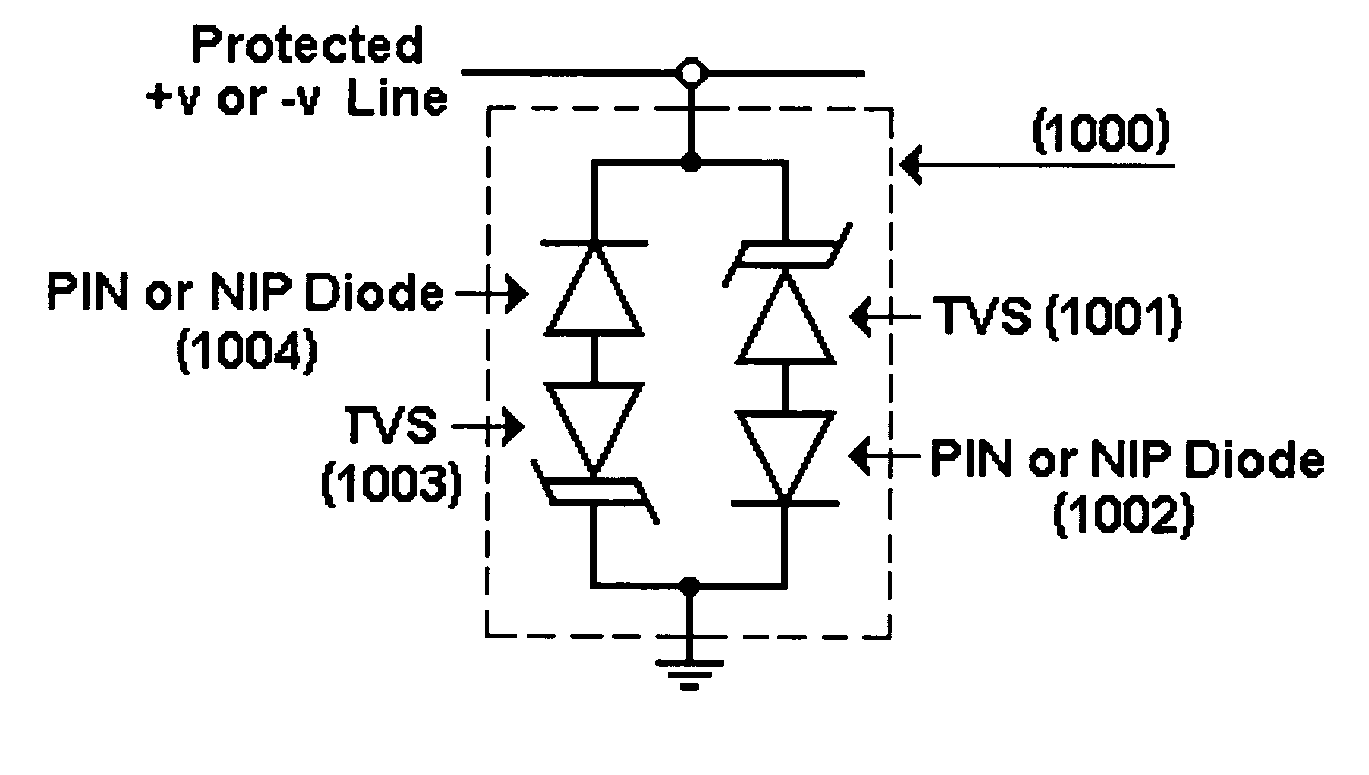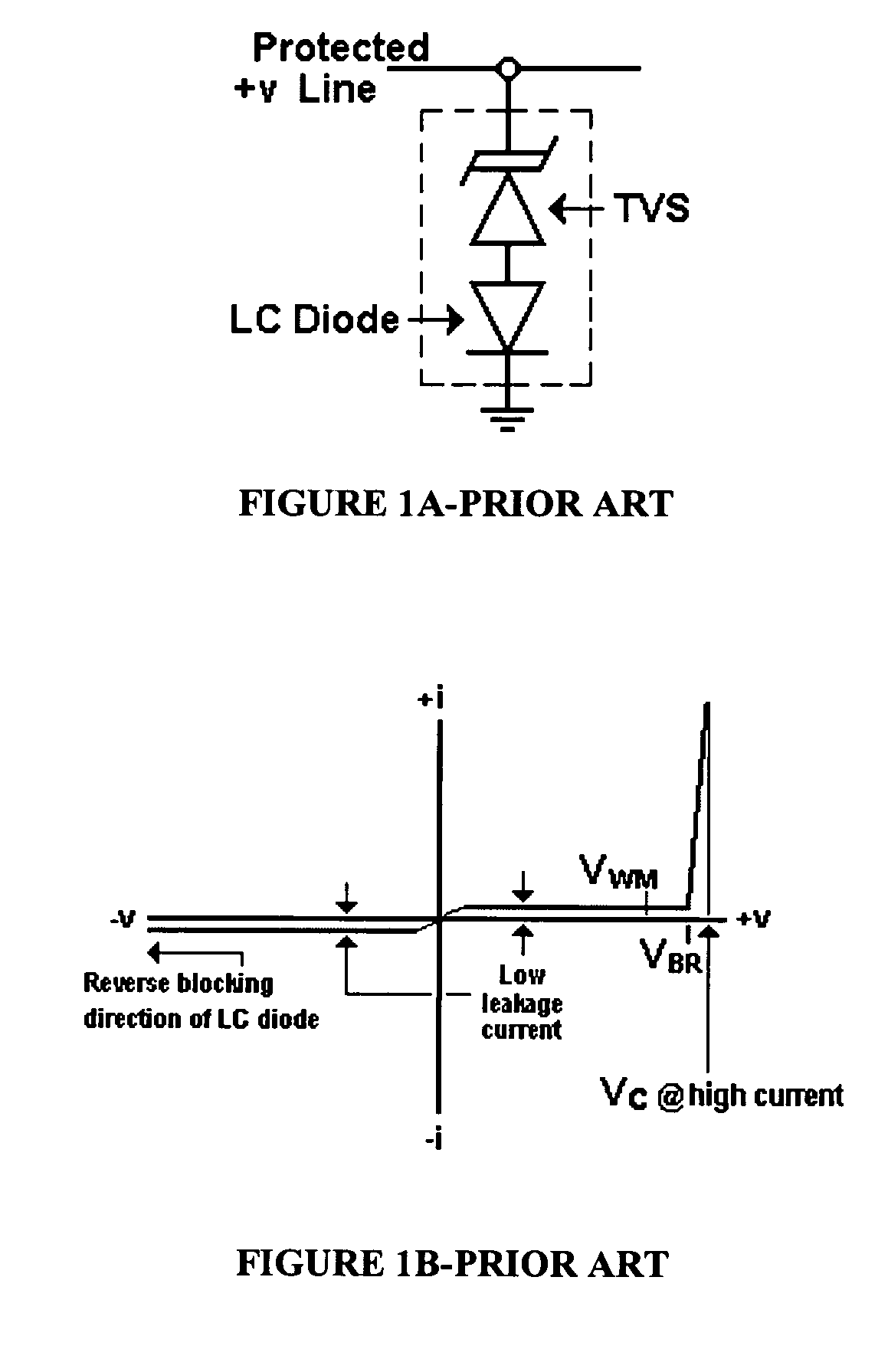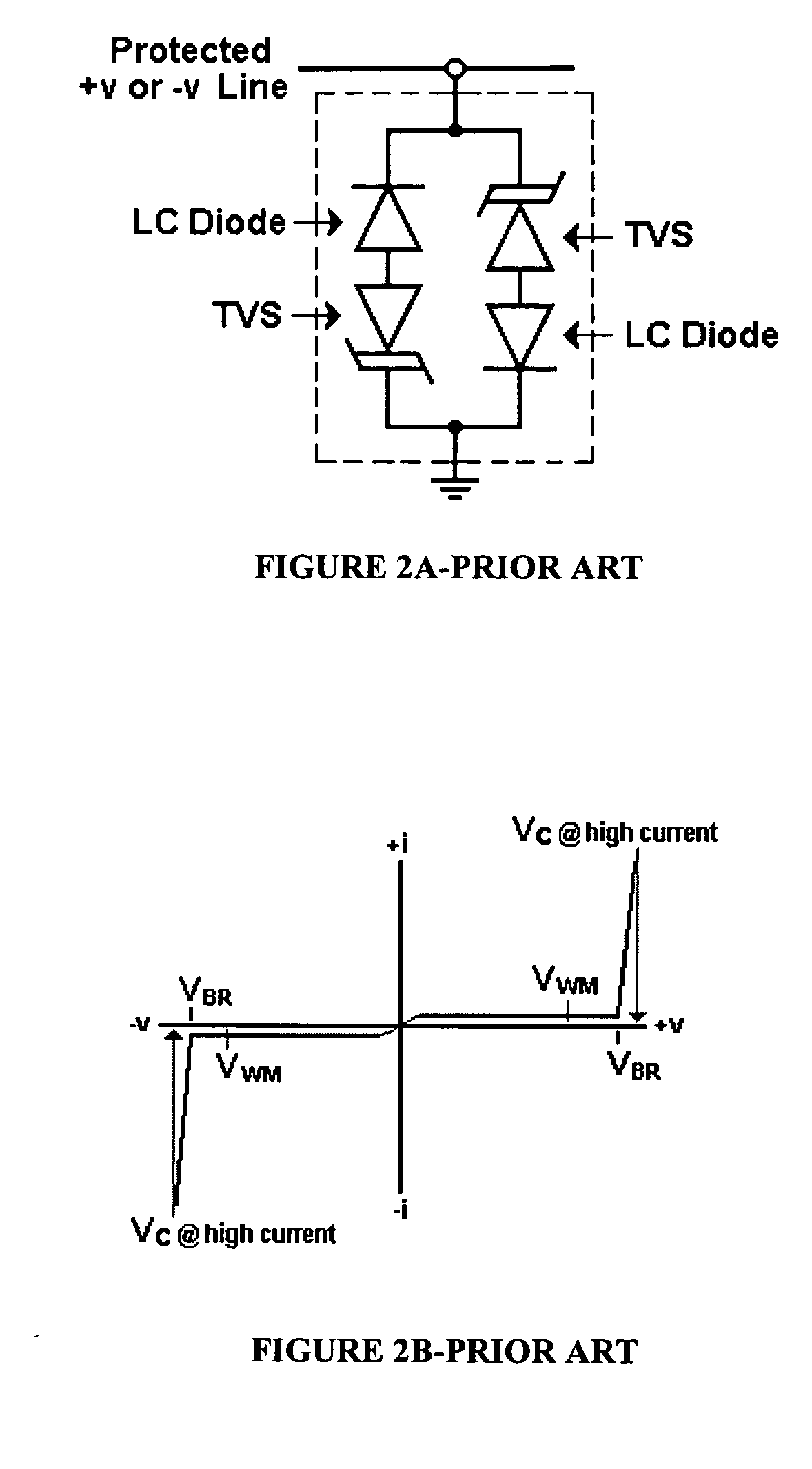Device for protecting I/O lines using PIN or NIP conducting low capacitance transient voltage suppressors and steering diodes
a low-capacitance transient voltage and diode technology, applied in the direction of electric variable regulation, process and machine control, instruments, etc., can solve the problems of limiting the ability of conventional low-capacitance rectifiers or signal diodes to provide lower capacitance values, and increasing the clamping voltage. , to achieve the effect of improving the capacitance and clamping voltage performance, reducing the clamping voltage, and improving the clamping voltage performan
- Summary
- Abstract
- Description
- Claims
- Application Information
AI Technical Summary
Benefits of technology
Problems solved by technology
Method used
Image
Examples
first embodiment
[0046]FIG. 9, being the present invention, is a schematic of a unidirectional blocking low capacitance TVS using a PIN or NIP diode. As seen therein, a TVS p-n junction diode element 901 and low-capacitance (“LC”) diode PIN or NIP junction element 902 are placed in series and with opposite polarity for unidirectional protection. The unidirectional low capacitance TVS component 900 is a two (2) terminal device that has at least one unidirectional TVS element 901 and one series blocking PIN or NIP junction diode 902, in opposite polarity for reducing capacitance in one direction only.
[0047]FIG. 10, being a second embodiment of the present invention, is a schematic of the bi-directional low capacitance TVS using a PIN or NIP diode. Bi-directional low capacitance TVS protection circuit 1000 consists of two pairs of TVS diodes 1001, 1003 and LC PIN or NIP diodes 1002, 1004. Diodes 1003 and 1004 are in parallel and in opposite direction from the first series of TVS and LC diode pair shown...
third embodiment
[0048]FIG. 11, being the present invention, is a schematic of the unidirectional conducting low capacitance TVS using a PIN or NIP diode. TVS circuit 1100 is adapted to provide unidirectional conducting, low capacitance protection. Circuit 1100 comprises an LC PIN or NIP diode 1103 in parallel to the TVS diode 1101 and LC PIN or NIP diode 1102, and opposite direction of the LC PIN or NIP diode 1102. This configuration provides a low-voltage, conduction path in one direction in parallel with a low-capacitance diode and unidirectional TVS protection as seen in FIG. 1A. The circuit of FIG. 11, discloses a two (2) terminal device with a unidirectional low capacitance TVS diode 1101 as described in FIG. 9 and an anti-parallel LC PIN or NIP diode 1102. To provide for a low capacitance TVS with a forward conducting low-voltage characteristic, the LC PIN or NIP diode is placed anti-parallel to the unidirectional low capacitance TVS. This LC PIN or NIP diode must also have a reverse blocking...
PUM
 Login to View More
Login to View More Abstract
Description
Claims
Application Information
 Login to View More
Login to View More - R&D
- Intellectual Property
- Life Sciences
- Materials
- Tech Scout
- Unparalleled Data Quality
- Higher Quality Content
- 60% Fewer Hallucinations
Browse by: Latest US Patents, China's latest patents, Technical Efficacy Thesaurus, Application Domain, Technology Topic, Popular Technical Reports.
© 2025 PatSnap. All rights reserved.Legal|Privacy policy|Modern Slavery Act Transparency Statement|Sitemap|About US| Contact US: help@patsnap.com



